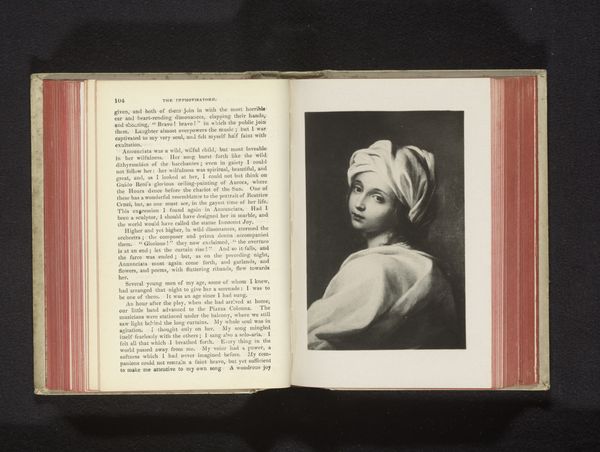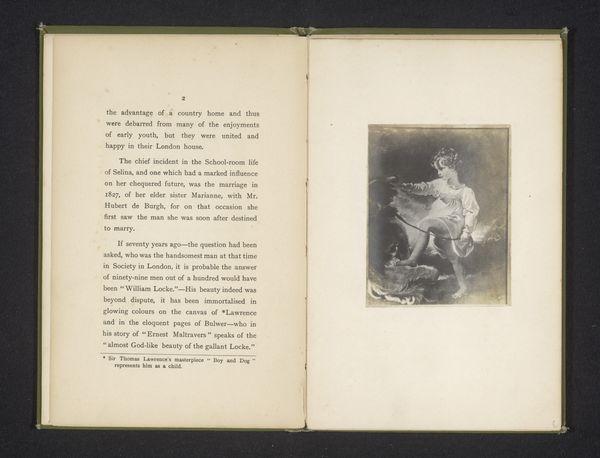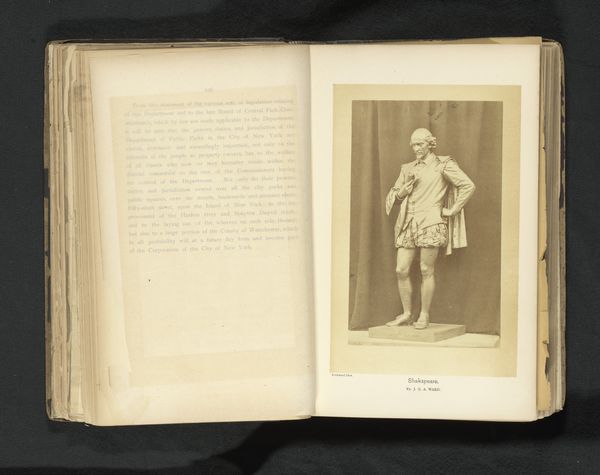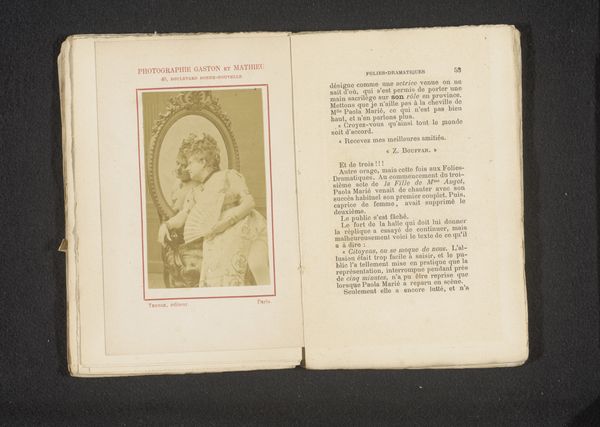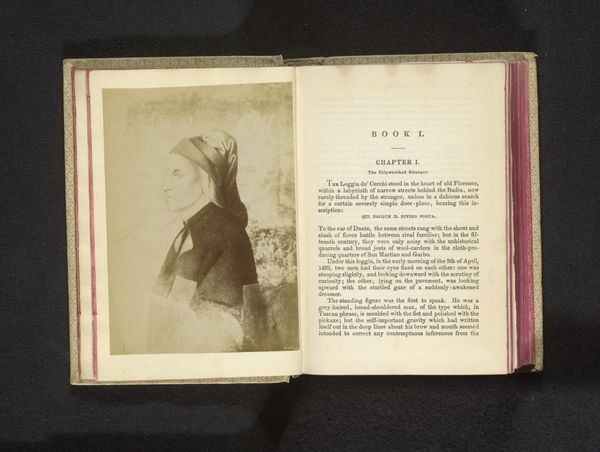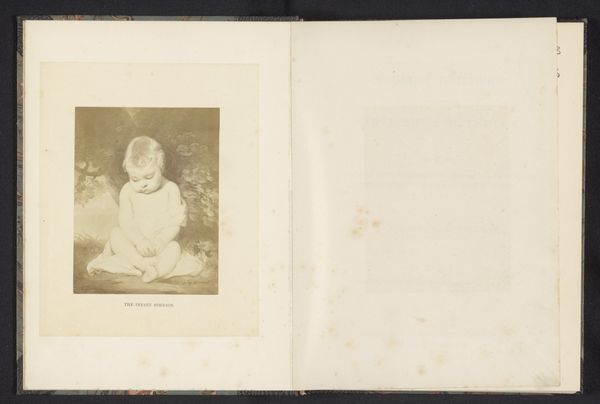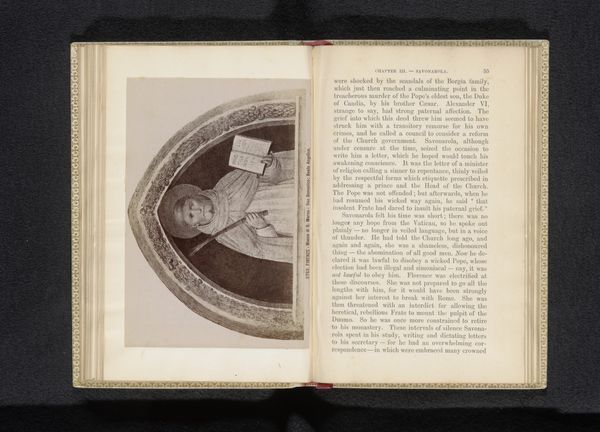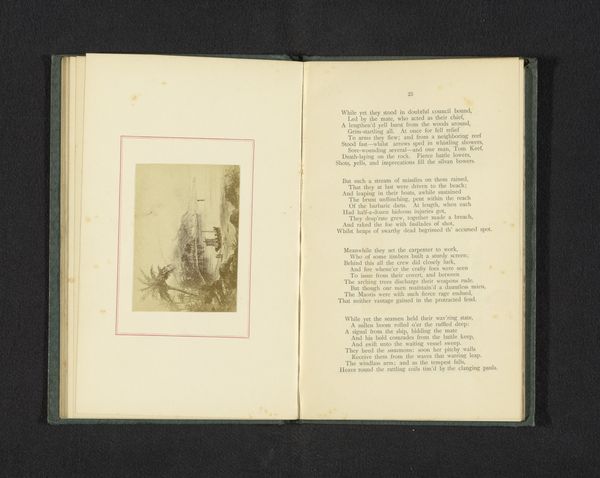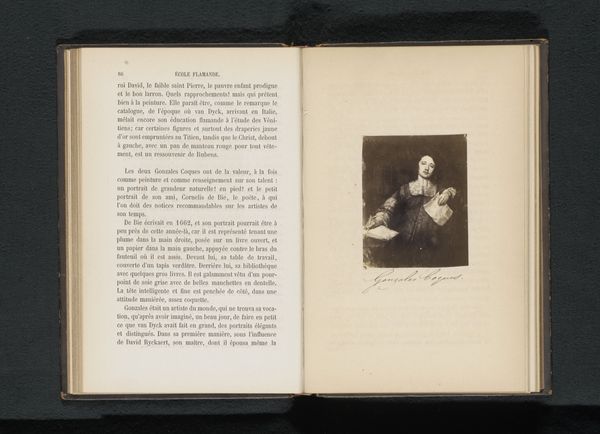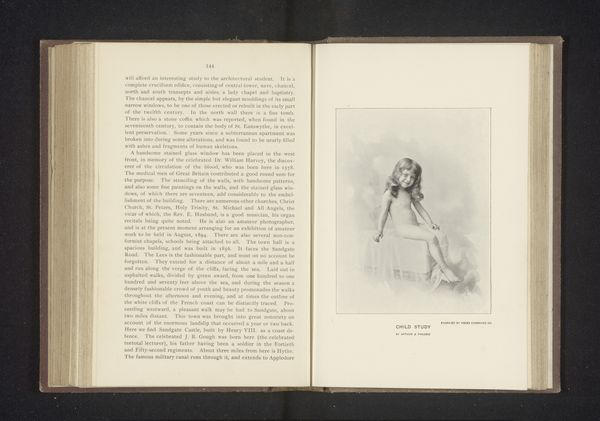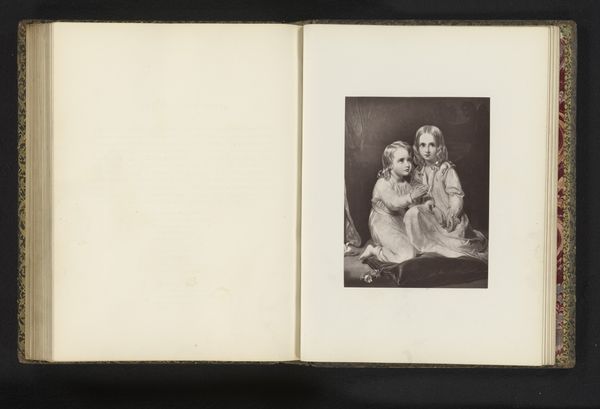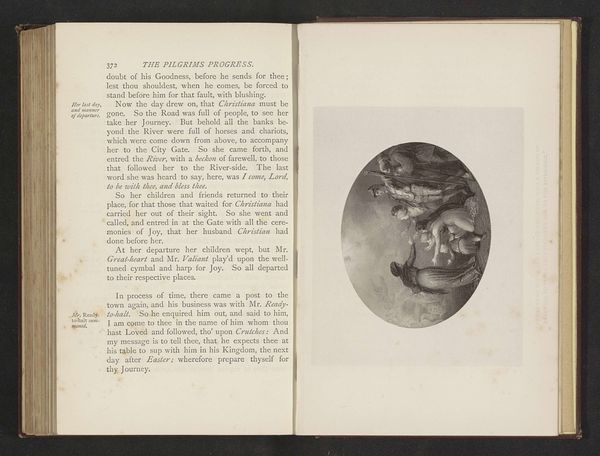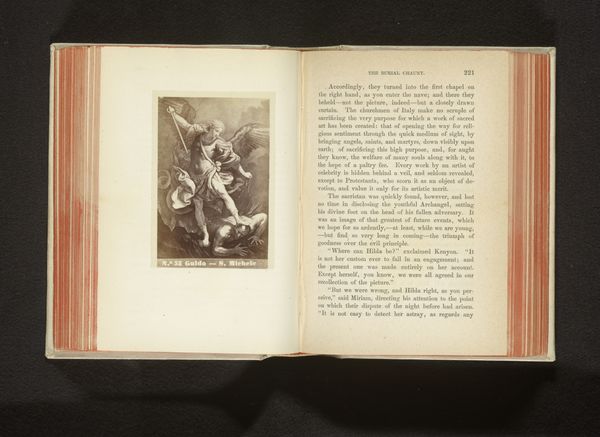
Fotoreproductie van een portret van Beatrice Cenci door Guido Reni of Elisabetta Sirani before 1860
0:00
0:00
Dimensions: height 90 mm, width 63 mm
Copyright: Rijks Museum: Open Domain
Curator: I’m immediately struck by the contrast in this gelatin silver print—the soft, almost dreamlike quality alongside what seems to be immense sadness in the subject's gaze. Editor: Indeed. Here we have a photographic reproduction of a portrait of Beatrice Cenci, its attribution tentatively given to either Guido Reni or Elisabetta Sirani, and created at some point before 1860. It's currently housed right here at the Rijksmuseum. Curator: Cenci. Even the name itself carries a weight, a historical baggage. To encounter her image, filtered through photographic reproduction within what looks like the pages of a book, creates this layered experience. We’re distant, yet somehow closer to her perceived inner state. Editor: Precisely. The image's presence in this form allows for a dialogue with its history. The tragic narrative surrounding Beatrice – a young woman executed for her father’s murder – has always captivated the public imagination. Consider how Romanticism amplified these stories, transforming her into a potent symbol of victimhood and injustice. Curator: Absolutely, and it's fascinating how the technical execution in the print, all those soft edges, supports that romantic sensibility, almost glorifying victimhood by positioning Beatrice as passive. What is her agency here? What does it mean for photography, a relatively new medium then, to recirculate such a loaded image? Editor: This particular print invites scrutiny into the mechanics of image distribution, its impact on public sentiment. Consider that mass-produced images served very explicit ideological roles during this era; to what extent does that function contribute to and dilute the original symbolic intention of that portrait. Curator: It’s less about Beatrice Cenci as an individual then, perhaps, and more about what Beatrice as an image represented. A cautionary tale against patriarchy? An exotic romantic martyr? Seeing it displayed as it is here in the book invites all those questions, particularly now as a woman's control over her body and fate is again being contested. Editor: Right. This image acts as a point of departure for broader socio-political inquiries into visual representation. The image isn't a definitive conclusion, rather an avenue to pursue discourse surrounding these loaded topics. Curator: A somber yet compelling starting point to re-evaluate how women, and their narratives, are treated historically. Editor: And how their images are endlessly reworked to suit various agendas across time.
Comments
No comments
Be the first to comment and join the conversation on the ultimate creative platform.
